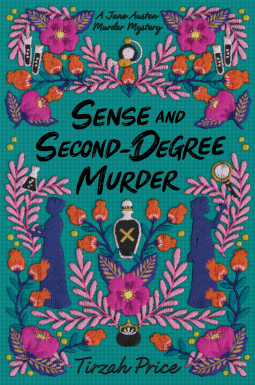Index, A History of the: covers a topic that I had given little thought to, aside from how useful a good index can be when I need it. Like all parts of human history, personality, politic, and power all had a role to play in any steps forward made in indexing. I really like that the author made an effort to give a well balanced look at how indexes came about and evolved over the years while including a look at the rivalries, drama, and humor that can be found along the way. I also like that he acknowledged the hard work that goes into creating a proper subject index, in the past and still today, and how many of the people that do the work get little to no credit for the labor intensive process. I greatly enjoyed the read and learned a great deal. I think those that value indexes, and are interested in bookish history of any kind, will greatly enjoy this book. For those that are interested, there is a very well done audiobook version of this title as well.
Book Review: Index, A History of the: A Bookish Adventure from Medieval Manuscripts to the Digital Age by Dennis Duncan
Early Book Review: Octopus, Seahorse, Jellyfish by David Liittschwager
Early Book Review: Shadow Fallen (Dream-Hunter) by Sherrilyn Kenyon
Early Audio Book Review: Sense and Second-Degree Murder by Tirzah Price
Early Book Review: Sky Wolf's Call: The Gift of Indigenous Knowledge by Eldon Yellowhorn, Kathy Lowinger
Book Review: Somewhere in the Bayou by Jerome Pumphrey, Jarrett Pumphrey
Somewhere in the Bayou is a stylistic picturebook about assumptions and how acting on those assumptions can end badly. The group of animals each make assumptions about the tail they see, and act on those assumptions without taking a moment to verify and problem solve together. I thought the art style fit the story very well and that the simple, solid artwork let readers focus even more on the expressive faces of the animals and overall story. I also liked that the final solution involved a kindness even though there is a bit of a dark twist in the end.
Book Review: What the Fang? (Undead Ever After) by Stacey Kennedy
Early Book Review: The World of Coral Reefs: Explore and Protect the Natural Wonders of the Sea by Erin Spencer
Book Review: Hidden Animal Colors by Jane Park
Book Review: Two Heads: A Graphic Exploration of How Our Brains Work with Other Brains by Uta Frith; Chris Frith; Alex Frith
Two Heads: A Graphic Exploration of How Our Brains Work with Other Brains was written by Uta Frith, Chris Frith, and Alex Frith, and illustrated by Daniel Locke. Professors and husband-and-wife team Uta and Chris Frith have pioneered major studies of brain disorders throughout their nearly fifty-year career. Here, in Two Heads, their distinguished careers serve as a prism through which they share the compelling story of the birth of neuroscience and their paradigm-shifting discoveries across areas as wide-ranging as autism and schizophrenia research, and new frontiers of social cognition including diversity, prejudice, confidence, collaboration, and empathy. Working with their son Alex Frith and artist Daniel Locke, the professors examine the way that neuroscientific research is now focused on the fact we are a social species, whose brains have evolved to work cooperatively. They delve into a wide range of complex concepts and explain them with humor and clarity. You’ll discover what happens when people gather in groups, and how people behave when they’re in pairs—either pitted against each other or working together. Is it better to surround yourself with people who are similar to yourself, or different? And, are two heads really better than one?
Two Heads offers readers a solid understanding of the brain, and all it wonders and misfires. I like that opposing viewpoints are mentioned, and that the fact that these two experts openly admit that they disagree on some topics. I like how the text makes it clear what experts think they know, that there are various schools of thought, and just how much we still have to learn. It is when scientists or experts proclaim that we have all the answers that they loose credibility with me. I thought the illustrations were charming, and I liked the labels, humor, and hidden details which made each page more engaging and interactive. I think it was written in a very accessible style, with humor and explanations that really work. I found the personal touches and side comments made the book more entertaining and broke up some of the more intense teaching moments to help readers process. I think it is honestly approachable to any reader interested in the subject matter. As expected of a book from scholars and professionals, the footnotes and endpages were on point and well done. I think this would be a great addition to libraries, particularly graphic medicine collection (I will be recommending it for my own workplace just for that reason).










